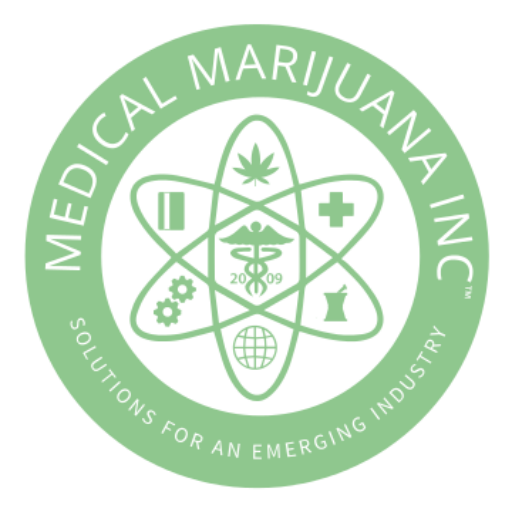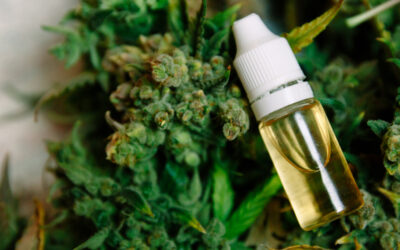This week:
- Many Non-Steroidal Anti-Inflammatory Drugs (NSAIDS) are now Associated with Heart Failure
- Cannabis Flavonoids – Emerging Therapeutic Applications
- Marijuana Arrests Fall to a 20 Year Low
- Autism Patents Now Treating Children with Cannabis
Many Non-Steroidal Anti-Inflammatory Drugs (NSAIDS) are now Associated with Heart Failure
Many commonly used non-steroidal anti-inflammatory drugs (NSAIDs) are now associated with elevated risk of heart failure hospitalizations, a case-controlled European study has shown. The effects appeared to be dose-related, such that the risk of heart-failure doubled when certain NSAIDs were used at twice the recommended daily allowable dosage. The researchers further noted that “even medium doses”… (at recommended daily allowable levels) of certain NSAIDs “were associated with increased risk”.
The study was performed by Dr. Giovanni Corrao, PhD of Italy’s University of Milano-Bicocca and was reported in the British Medical Journal. Dr. Corrao’s study included over 92,000 hospital admissions for heart failure and 8.2 million adults who started NSAIDs therapy from 2000 to 2010 in the Netherlands, Italy, Germany and the UK.
The overall link between heart failure and NSAIDs “has been known for over 20 years and is likely related to the predilection of these drugs to cause retention of salt and water plus increases in blood pressure,” commented Dr. Milton Packer, MD of Baylor University Medical Center in Dallas, Texas.
While the FDA and other agencies have warned about potential risks of NSAIDs, their wide over-the-counter use “fuels the common misconception that NSAIDs are harmless drugs that are safe for everyone” and makes “even a small increase in cardiovascular risk… a concern for public health,” the BMJ editorial said.
“Therefore a more restricted policy by regulatory authorities on the availability of NSAIDs and requirements for healthcare professionals providing advice on their use and potential harm is warranted.”
The time has come to evaluate marijuana’s potential for improving the lives of these pain patients. A natural botanical, with zero side effects, no one has ever overdosed and died as a result of an “overdose” of botanical cannabis. Significant pain relief and central nervous system relaxation benefits have been shown anecdotally, and soon we hope to have more formal pain-related trials to compare vs. NSAIDs.
Article: http://www.medpagetoday.com/Cardiology/CHF/60513?xid=nl_mpt_DHE_2016-09-30&eun=g998806d0r&pos=0
Cannabis Flavonoids – Emerging Therapeutic Applications
Flavonoids are a group of phytonutrients most remarkably known for providing vivid non-green pigments to the plant kingdom, such as the blue in blueberries, the red in red roses and the purple in your Granddaddy Purp Cannabis. Alongside cannabinoids (such as THC and CBD) and terpenoids (such as myrcene and limonene), flavonoids in cannabis also produce a range of effects. Commonly grouped together, flavonoids combine together to support the other cannabis phytonutrients – and play a highly bioactive role in the plant’s consumption and cultivation.
When cannabis is consumed, flavonoids contribute to the color, taste, smell, entourage effect and overall sensory experience. While contributing to health benefits of the cannabis plant, these flavonoids also have a great reputation among the wellness community for providing a range of health benefits to humans.
Federal prohibition has prevented more study and research in regards to cannabis related flavonoids; however, this class represents one of the largest nutrient families known to science. Over 6,000 individual flavonoids have been identified and many are found in the fruits, vegetables and herbs that we routinely consume.
A type of flavonoid found in green tea and cacao known as “catechins” is known to provide antioxidant and cardiovascular health benefits, while also providing favorable effects upon cholesterol levels in humans. Another flavonoid, known as “quercetin” which is readily available in many fruits and vegetables (as well as in cannabis) is known for having potential antioxidant and anti-viral properties.
Certain flavonoids are unique to the cannabis plant and are now referred to as “cannaflavins” and research is underway to distinguish cannaflavins from more common flavonoids. Recently it was discovered that a cannaflavin known as “Cannaflavin-A” inhibits PGE-2, a prostaglandin responsible for inflammation – similar to the effect of NSAIDs like aspirin. The research study showed that “Cannaflavin-A” reduces inflammation and is exponentially more powerful than aspirin.
Cannaflavin-B and Cannaflavin-C are being studied as well. Researchers continue their work on more common flavonoids in plants that also appear in cannabis: such as beta-sitosterol, vitexin, isovitexin, apigenin, kaempferol, quercetin, luteolin and orientin – whether these flavonoids enhance or reduce certain effects of cannabis based cannabinoids and/or terpenoids.
Because of the high level of anti-inflammatory properties that support detoxification of tissue-damaging molecules, flavonoids consumption if often associated with reduced risk of certain cancers, most notably lung and breast cancer. Flavonoids are readily found on the cured leaves and flowers of cannabis and through advanced extraction techniques, we may soon be combining cannabinoids with a ribbon of “flav” oil.
Here is a list of some major flavonoids, potential therapeutic effects and their corresponding vaporization temperatures:
- Beta-sitosterol: 273 degrees F; anti-inflammatory
- Apigenin; 352 degrees F; estrogenic, anxiolytic, anti-inflammatory
- Cannaflavin-A; 360 degrees F; anti-inflammatory
- Quercetin; 482 degrees F; antioxidant, antiviral
More info: https://www.merryjane.com/health/flavonoids-cannabis
Marijuana Arrests Fall to a 20 Year Low
Marijuana arrests fall to a 20-year-low, but someone is still getting busted about every minute. Police made fewer arrests for marijuana-related offenses last year than they have for any year since 1986, according to FBI crime data recently released. Still authorities made 643,000 arrests for marijuana-related charges in 2015 – or about one every 49 seconds. Charges related to marijuana possession and sale accounted for about 43.2 percent of all drug arrests.
With support for marijuana legalization at an all-time high, Tom Angell, chairman of the drug policy reform group, Marijuana Majority, told the Huffington Post that “law enforcement’s priorities are still out of synch with the majority of Americans.”
The Drug Policy Alliance group mentions that a “marijuana arrest is no small matter”. Most people so arrested are held in jail for a day or more, and many are permanently branded with a criminal record which can hurt their employment, educational access or housing. Additionally, a one-year Huffington Post analysis of jail deaths found that several inmates arrested on a marijuana offense died behind bars.
Such arrests are costly too. Authorities spend about $3.6 billion annually enforcing laws against marijuana possession, according to the ACLU (American Civil Liberties Union). “While the numbers are thankfully dropping over time, it’s alarming and simply unacceptable that someone is harassed by the police just for marijuana every 49 seconds in this country” said Tom Angell. “Polls now consistently show that a growing majority of Americans support full legalization and it’s about time more politicians and law enforcement caught up.”
Article: http://www.huffingtonpost.com/entry/marijuana-drug-arrests-2015_us_57e9776de4b0e28b2b5585f7
Autism Patents Now Treating Children with Cannabis
Autism parents are treating children with cannabis, and at the crux of the contradictions lie important questions: is marijuana a legitimate treatment for autism and is it safe to give to children…?
Dr. Orrin Devinsky, a neurologist at New York University is studying the effect of CBD on epilepsy says, “I am okay with approving these things and making them accessible for people with treatment-resistant problems.” “By the same token, we as a political, medical and scientific society should be moving for high quality scientific data. If its safe and effective people should be able to use their prescription plans and get it (cannabis); if it’s dangerous or ineffective, nobody should get access to it.”
Although cannabis is allowed for medicinal usage in 25 US States plus the District of Columbia, only Pennsylvania in their relatively recent legislation, allows for cannabis to be used for Autism. In recent years, parents of children with both epilepsy and autism have adopted the cannabis approach. Many mothers are true cannabis pioneers in search of solutions to assist their children.
A wonderful story about these pioneering parents is found here: https://spectrumnews.org/features/deep-dive/the-pioneers-parents-treating-autism-with-marijuana/
Isn’t it about time that more research is allowed into these potentially beneficial emerging therapeutics that can assist families…? Certainly when a prominent physician with the stature and credibility of Dr. Orrin Devinsky calls for more research to be undertaken. We certainly applaud Dr. Devinsky for his forward thinking regarding forms of cannabis that may assist families where there is little to no other hope.
To good health,
Stu
Stuart W Titus, PhD
President & CEO
Medical Marijuana Inc. (OTC: MJNA)






